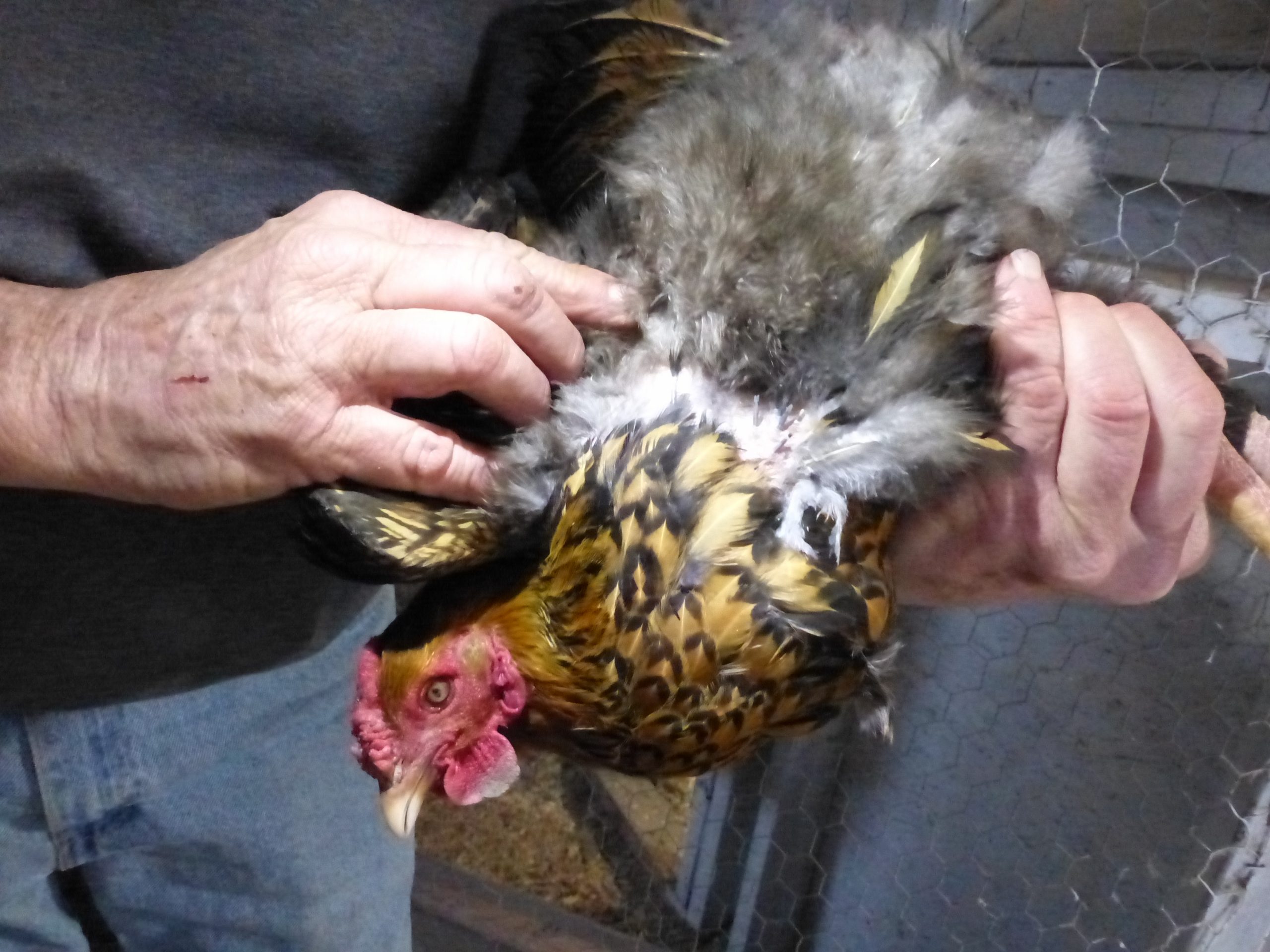Late winter. It is cold. Why in the world are my hens losing their feathers when they need every single one to keep toasty warm? Feather loss could be caused by age, molting, crowding, brooding, an overactive rooster or, gulp, lice or mites.
Just before they begin laying, hens that hatched four or five months earlier look like they just stepped out of a chicken spa. Their feathery wardrobe is gorgeous and covers everything but their legs, feet, and heads. Then life’s stresses begin taking a toll. After months of laying, patches of feathers disappear revealing reddish bare skin. Although that often happens during midwinter’s chill, feather loss is common and usually does not impact a hen’s health. Here are baldness causes and ways to reduce it:

AGE AND NUTRITION
Just like with people’s hair, over time some feathers just drop out. Combined with egg laying, which puts an enormous nutrient drain on a hen’s body, remaining feathers look ragged. The best solution is to give the hens a high-quality feed formulated for layers. It should have a protein content of around 17% and contain all the nutrients they need. Nutrient packed treats include sunflower seeds, mealworms, shrimp shells, and bits of cheese. Feed treats sparingly.
MOLTING
After a year or more of laying a hen needs a vacation, called the molt. Her first molt usually starts about 18 months after she hatched. She will stop laying and shed her old feathers. New ones quickly regrow. After five or six weeks she’ll sport her new wardrobe and again look like she just emerged from the chicken spa. Then she’ll start laying and molt again next year.
MOTHERHOOD
Every once in a while, a hen opts for motherhood. A broody hen stops laying, fluffs her feathers, changes her voice, eats little, and spends all day and night sitting in the nest. The feathers she has shed from her chest help her keep the eggs beneath her warm. Broodiness is a natural process.
ROOSTERS AND SPACE
When mounting a hen, roosters often scratch off some of her back feathers. If mating is frequent a hen’s back often is bald. If the ratio of roosters to hens is high, feather damage is increased. Reducing the number of roosters in the flock can reduce the problem.
Like humans, crowding stresses hens and can cause them to be aggressive to their flock mates. They will pick off feathers. Heavy breed hens, like Rhode Island Reds, need at least four-square feet of coop space per bird, but more is better. If hens squabble and pick at each other either reduce the flock or expand the coop’s size. Having plenty of interior space and an outdoor run helps reduce social problems, like feather picking.
PARASITES
Skin parasites can cause a hen to lose feathers. Birds suffering from heavy infestations of lice or mites are listless and rarely lay eggs. Lice live on their bodies, while mites live in cracks in roosts and coop walls and pester chickens after dark. To check for parasites, enter the coop after dark, gently lift a sleeping hen, flip her over and shine a flashlight beam inside her feathers and on bare skin. Lice are easy to spot. Mites are smaller.
Hens rid pests by taking luxurious dust baths. Fluffing feathers in dusty soil may suffocate mites and lice. Fortunate chickens have an outdoor run with dry soil where they can fluff. They’ll also dust if the litter inside the coop is loose dry sawdust. Farm stores sell pesticides that can be applied to chickens and roosts, but an organic way to solve a parasite problem is to make a dust bath for the hens and sprinkle some diatomaceous earth in the dirt. Tiny spikes of ancient diatoms puncture and kill pests without the use of chemicals.
Feather loss may seem alarming but it’s normal. Hens thrive with patches of bare skin, but a combination of nutritious food, healthy living quarters, and no external parasites minimizes baldness.